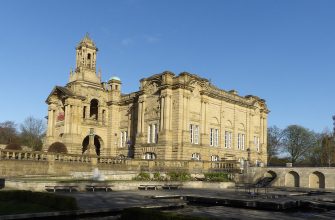Deep beneath the bustling streets of Liverpool, England, lies a labyrinth of hidden tunnels that have captivated the curiosity of locals and tourists alike. Known as Williamson’s Tunnels, this underground network is a significant part of Liverpool history and a fascinating tourist attraction. The tunnels were the brainchild of Joseph Williamson, a wealthy businessman and philanthropist, whose enigmatic creation continues to puzzle historians and archaeologists. Today, these subterranean passages offer a unique glimpse into the past and are a must-visit for anyone interested in heritage tourism.
The History of Williamson’s Tunnels
The story of Williamson’s Tunnels begins in the early 19th century with Joseph Williamson, a successful tobacco merchant. Williamson began the construction of the tunnels in 1810, reportedly as a means to provide employment for the local populace during a period of economic hardship. However, the true purpose of the tunnels remains a mystery, with theories ranging from a philanthropic project to a secret smuggling network.
Despite Williamson’s death in 1840, the tunnels were not fully explored or mapped until the 20th century. Today, they are considered an important historical site, offering a unique insight into Liverpool’s past.
Exploring the Tunnels
Visitors to Williamson’s Tunnels can expect an intriguing journey through a maze of underground passages, chambers, and archways. The site is managed by the Joseph Williamson Society, which offers guided tours that delve into the history and mystery of this unique attraction.
There are two main sections open to the public: the Paddington site, which features a large underground chamber, and the Mason Street site, where ongoing excavations continue to reveal new sections of the tunnel network.
Practical Information for Visitors
Tours of the tunnels are available throughout the year, but pre-booking is essential due to their popularity.
Admission fees apply, with discounts available for children, students, and seniors. All proceeds go towards the preservation and exploration of the tunnels.
The tunnels can be chilly, even in summer, so it’s advisable to dress warmly and wear sturdy footwear.
While the Paddington site is fully accessible, the Mason Street site may not be suitable for those with mobility issues due to the ongoing excavations.
Tips for Tourists
Visiting Williamson’s Tunnels is a unique experience that offers a different perspective on Liverpool history. Here are some tips to make the most of your visit:
Take the guided tour: The guides are knowledgeable and passionate about the tunnels, and their insights add depth to the experience.
Allow plenty of time: There’s a lot to see, and the tours can take up to an hour.
Don’t forget your camera: The tunnels are a photographer’s dream, with their atmospheric lighting and intriguing architecture.
In conclusion, Williamson’s Tunnels are a hidden gem in Liverpool, offering a unique journey into the city’s past. Whether you’re a history buff, an architecture enthusiast, or simply looking for an unusual tourist attraction, these underground tunnels are sure to captivate and intrigue.








